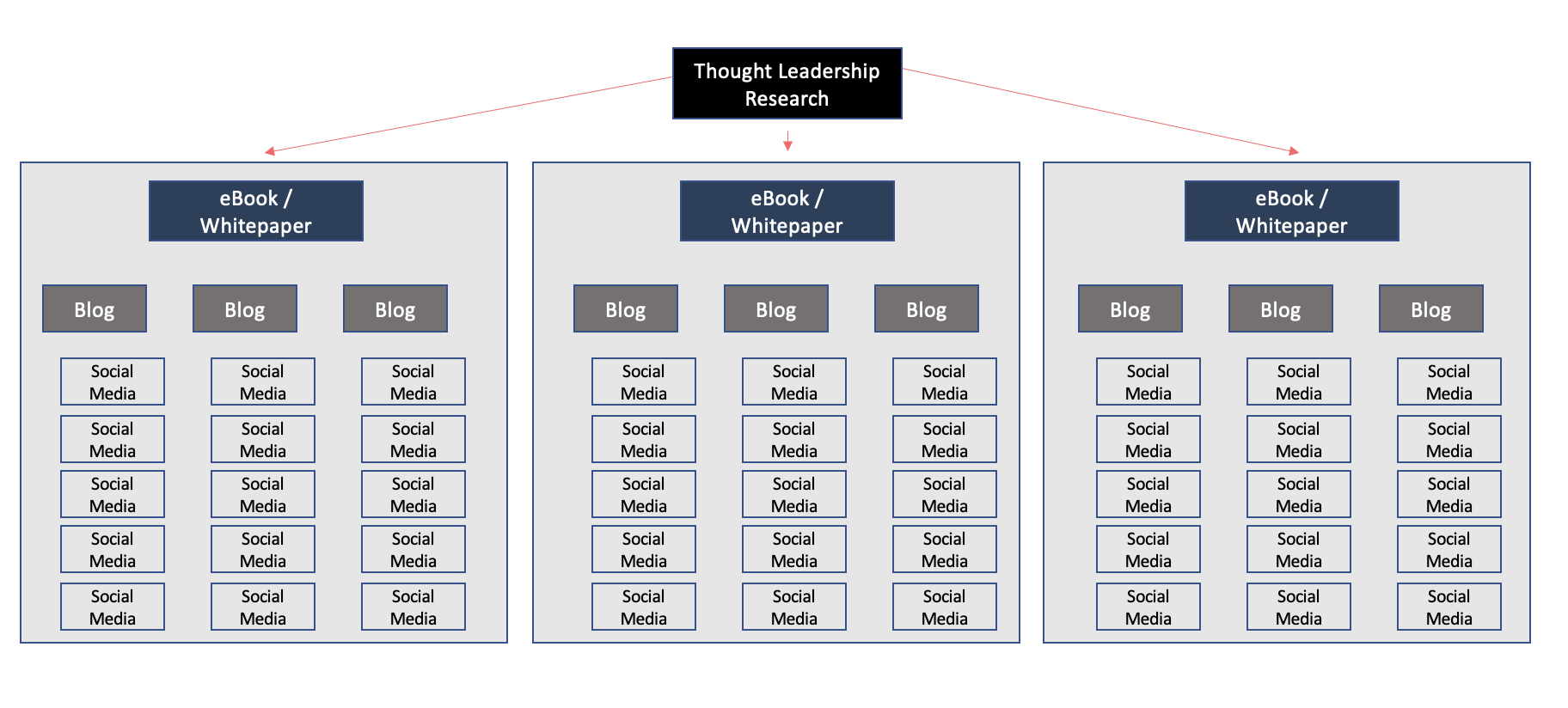Getting any kind of PR can feel next to impossible, especially when you have nothing seemingly new to talk about. Your business isn’t new. Your product isn’t new. Therefore, journalists don’t have anything new to report on.
Enter in original research.
Developing and publishing original research is that newness you need to get on journalists’ radars, give them a reason to cover you and your business, and ensure that your business gets PR even during those slow periods.
How Original Research Helps You Get PR
Why is doing original research such a great way to get PR? It all comes down to what drives journalists’ day-to-day decisions.
Journalists are required to pitch and produce original stories and articles, often multiple times per week. This means they are constantly on the look out for new ideas. It’s hard work and they welcome receiving great information that helps them come up with those ideas.
This is where original research comes in. When you have completely fresh data, you have something that’s valuable to journalists: a completely new story!
Of course, it has to be good data. That means leveraging responsible data collection approaches, using large sample sizes, and producing information that make sense. It must pass a journalist’s sniff test for them to even consider it.
But, when it does pass the sniff test, you have a win-win on your hands. Journalists get a new idea to help meet their publication deadlines. And, you get your company name and study in the news.
Don’t believe us? Here’s an example of a PR hit from one of our original research reports that shows this all in action.
Landing On The Right Research Topic
Embarking on this process starts with pinpointing the general topic for your research. Think of this as the overarching story you want to tell. You need a core idea and then supporting ideas to tie in logically.
There are three key things to consider when selecting your topic.
- Relevance: Your original research topic should align with what you do for a business. There needs to be a reason why journalists would consider you a reputable source for whatever you are producing. For instance, if you’re in the home improvement space, you may want to do research on energy efficiency sentiments. Or, if you work in IT security you may consider a study on perceptions of cyber threats.
- Topicality: Sometimes issues emerge and become topical. For example, the Great Resignation and Quiet Quitting became topical not too long ago. If relevant, you can jump on the bandwagon and produce research around that topic. Journalists will be writing about it already so this will give them more content to cover.
- Seasonality: Journalists often cover stories based on seasonal events. Think the holidays, the Super Bowl, school vacation week, or other events that impact large groups of people. If something seasonal is on journalists’ minds, you can help them out by producing research that aligns to that season.
Be sure to consider at least one of these factors when selecting your research topic. Though of course, you can choose two or all three. It’s the first step in increasing your chances of getting journalists to cover your report.
How To Create & Publish Your Research
Once you land on the ideal topic, it’s time to plan and execute producing and publishing your research.
Here is the process to go from ideation to published results.
1. Build Your Survey
We haven’t been explicit about this but original research for PR purposes is typically executed via surveys. This is because numeric, quantitative data makes for great charts and graphs that are easy to share. The more absorbable or tangible the findings, the more likely journalists are to see their value.
What this means is that you’ll have to craft a survey around the key topic you chose. First, think through the findings or data you’d love to see. With that done, work backwards to think through the questions you’ll need to ask to get those findings.
2. Finalize Respondent Profile
Think about who you want to answer your survey. It could be the general public, or it could be people that meet certain demographic, psychographic, or professional profiles.
Next, think about whether you want to compare and contrast responses from different types of respondents. For instance, in a B2C survey, you may want to compare people based on age, race/ethnicity, income or other basic demographics. If this is a B2B survey, factors like seniority, industry, or managerial experience may prove interesting.
3. Program Your Survey
Once you know who you want in your survey and the questions you want to ask, you’ll need to make the survey available for respondents. Often, though not always, this means programming the survey digitally. This is the easiest way to make your survey accessible.
4. Collect Your Data
Now it’s time to get people to answer your survey. There are two typical ways to source people to take a survey:
- Customer Database: Companies with big customer or contact databases use them to source respondents. It’s a relatively easy approach and cost effective. But, it’s only as effective as the size and diversity of your database.
- Participant Recruiters: Another common approach is using organizations that specialize in recruiting people. They either have very large databases of people who opt-in to research studies or they specialize in directly reaching certain types of people. It’s a great way to source large quantities of respondents and very diverse respondents. However, it is a more expensive approach than using an internal database.
6. Find The Stories In Your Data
Once your data is in, it’s time to find the interesting or unexpected results. You can use a wide variety of approaches—charts and graphs, correlations, regressions—to see where the story takes you.
This is also the time to slice and dice your data by those unique groups or segments you initially earmarked as interesting. This will let you see if, in fact, there are additional interesting findings.
7. Publish Your Original Research
Last but not least, it’s time to make your findings public. This means crafting an approachable report that makes your research easy to digest. Here are some of our rules of thumb:
- No Jargon: Unless it’s extremely relevant to a niche industry, cut the jargon. Use direct, simple language.
- Charts & Graphs: Wherever possible, use easy-to-follow charts and graphs to visualize your findings. It makes it shareable, meaning it’s more likely to get picked up.
- Key Findings: Land on 6-7 really interesting, unique findings. These will structure your report, keep things approachable, and make it easy for journalists to pinpoint the salient ideas.
When your report is done, make it live and widely available. Usually, this means publishing it on your website to make it easily found.
How To Get PR Outlets To Learn About Your Research
Once your report is live, it’s ready for journalists. But, just because you built it that doesn’t mean they will come. You have to do a few extra steps to make people aware and excited about covering your research.
1. Write An (Embargoed) Press Release: Press releases are small teasers. They give high level information about the report and often include quotes from your company’s senior executive and/or research lead. Journalists use these to see if they should review the full report, and often pull information from the release into their final articles. Be sure to embargo it. That means give it to journalists before you push the report live. This gives them time to write about it before it’s old news.
2. Privately Share The Report: Prepare a private version of your report that you can share via PDF. You can also send this to journalists in advance to get them excited about the findings.
3. Build A List Of Relevant Journalists: Find journalists that cover your research topic. You only want to share your research with people who will actually care about it.
4. Pitch Your Report: Last but not least, you need to pitch your report. This means doing outreaches to journalists, piquing their interest, and sharing the press release and private report.
Keep in mind that PR isn’t guaranteed. However, the steps above ensure that you do everything possible to get your report picked up.
The Incremental Benefits of Original Research On Marketing Activities
So far, we’ve focused exclusively on using original research to get PR. That alone is a major win for any organization. However, the benefits don’t stop there.
In fact, one of the reasons companies make the investment in original research is that it fuels a wide range of short- and long-term marketing activities.
Building Organic Search / SEO: A major way to get new customers is to make it easy for them to find you on Google, Bing, and other search engines. Original research helps with this. Every time a PR outlet mentions your report, they almost always link to the report itself. This is called an inbound link. Inbound links are powerful signals to search engines that demonstrate your website’s quality. The more inbound links, the more search engines will be likely to show your website in searches.
Multi-Channel Content: A powerful marketing activity is content marketing. That is, the creation of blogs, eBooks, white papers, and other types of content that engage people and help show off your organization. They give people another excuse to link to your website (more inbound links!) and they give you a reason to reach out via email and social to share your content.
Original research is an incredible way to fuel your content marketing activities for many, many months. Take a look at the diagram on the right to see how this all plays out.
It all starts with that original research report you published. Any single report begets a series of eBooks or white papers where you can expound on a single idea uncovered within the report itself. These are opportunities to add in your perspectives or best practices to show how they align with, or address, those research findings.
Each of these longer content pieces can then be split into smaller, shorter blog posts. From there, each blog post can produce 4-5 unique social media posts for sharing across different social media platforms.
That’s months of content…thanks to one original research report.







